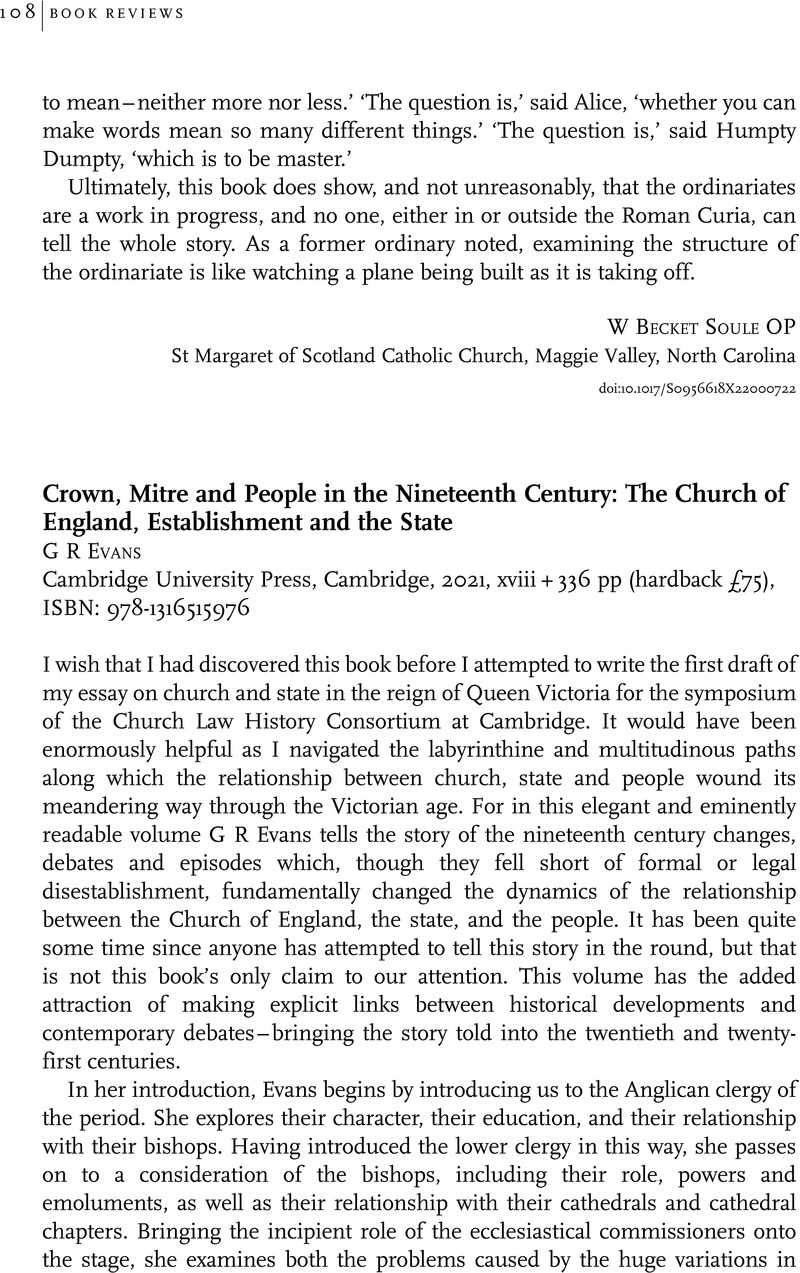No CrossRef data available.
Article contents
Crown, Mitre and People in the Nineteenth Century: The Church of England, Establishment and the State G R Evans Cambridge University Press, Cambridge, 2021, xviii + 336 pp (hardback £75), ISBN: 978-1316515976
Review products
Crown, Mitre and People in the Nineteenth Century: The Church of England, Establishment and the State G R Evans Cambridge University Press, Cambridge, 2021, xviii + 336 pp (hardback £75), ISBN: 978-1316515976
Published online by Cambridge University Press: 05 January 2023
Abstract
An abstract is not available for this content so a preview has been provided. Please use the Get access link above for information on how to access this content.

- Type
- Book Review
- Information
- Copyright
- Copyright © Ecclesiastical Law Society 2023



